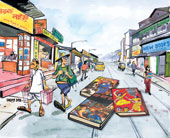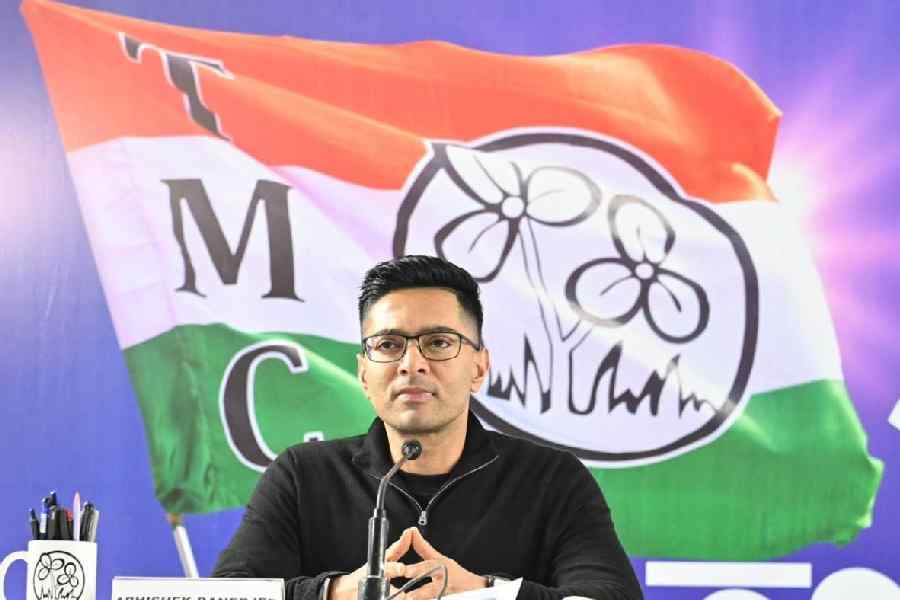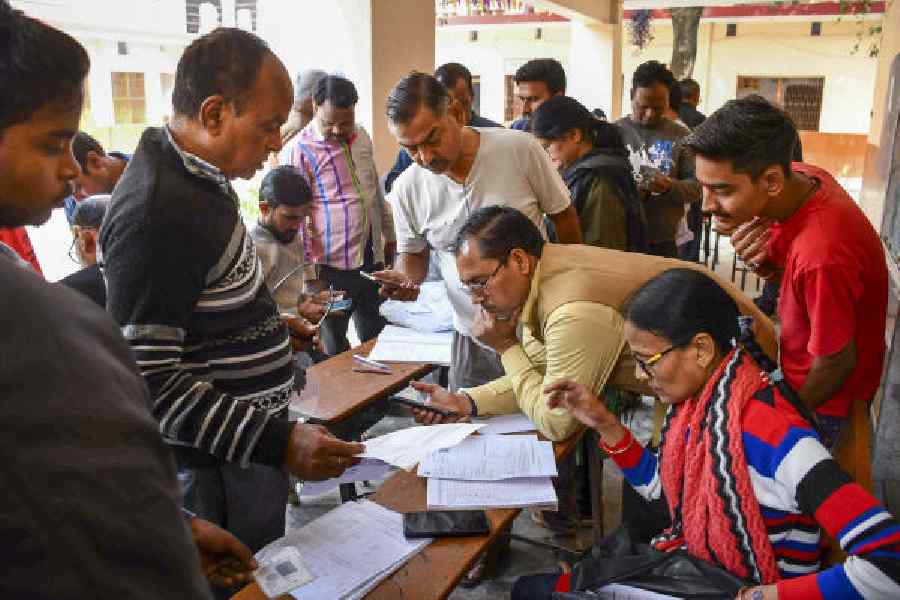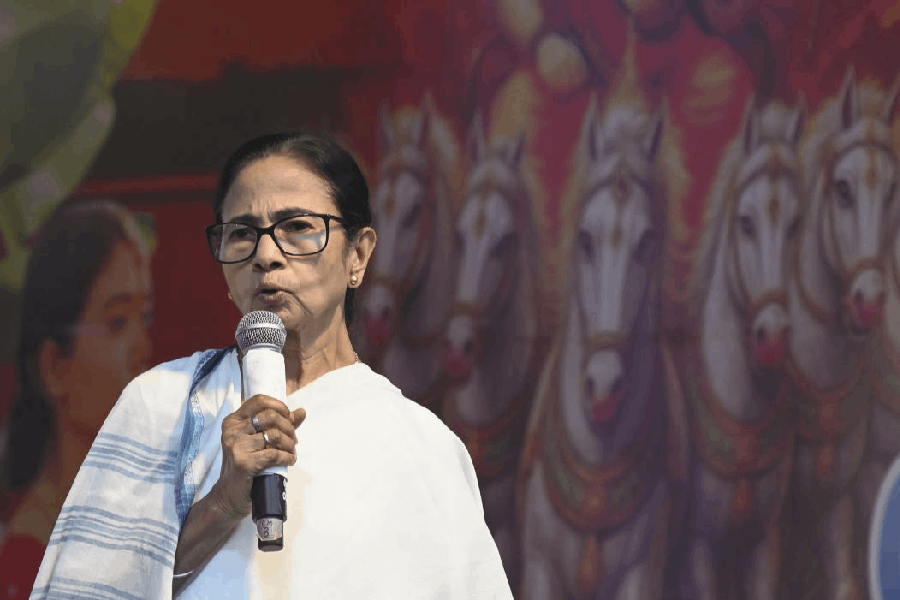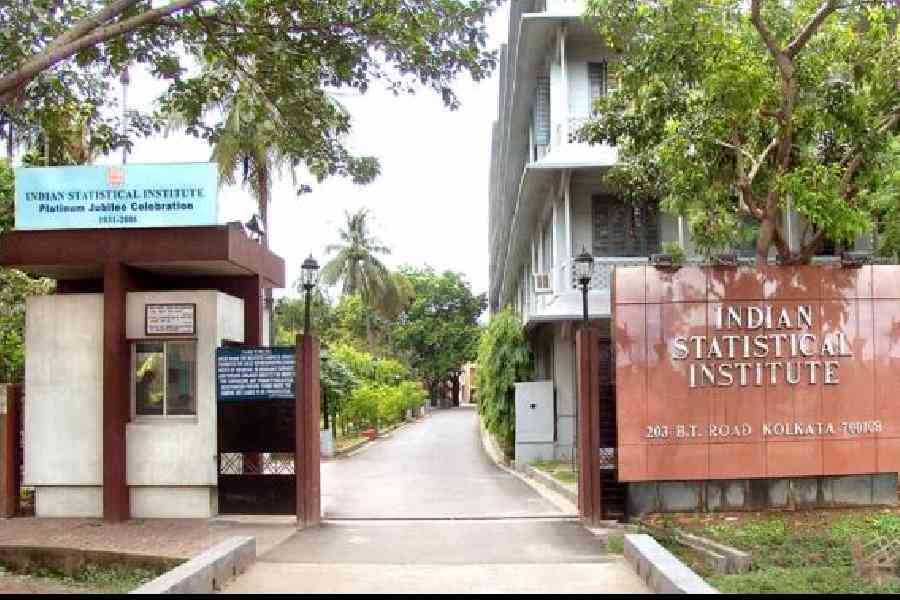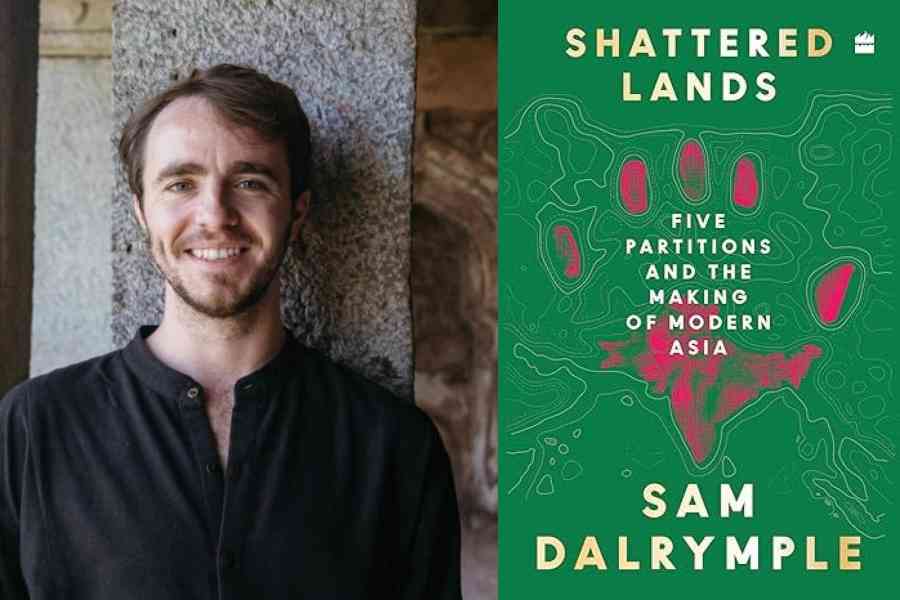 |
Tramping through Rabindra Sarani in Chitpur, it is easy to miss the shop where Ganesh Chandra Seal sits at his desk, proof-reading the script of a pala. The large signboard outside reads Diamond Library. It is a summer afternoon in the heart of jatra territory, where opera companies sit cheek by jowl with lithographic presses.
A few shops down the row is Mahesh Publications, an offshoot of General Library, established in 1939. Nearby is Akshay Library. With branches at College Street and Canning Street, the shop at Chitpur hardly opens now. Of the once flourishing Bot-tala where Bengali publishing began in the 18th Century, this is what survives.
To stay alive, it is reinventing itself. It has its own share of how-to, yoga and Feng Shui books.
Bot-tala now harks back to generations that grew up on the exploits of sleuths like Dipak Chatterjee, who appeared about 50 years ago. Lazy afternoons melted away as he sped across vasty seas in pursuit of enemies or grappled with musclemen armed with a couple of pistols and a dagger. Plots were unrealistic, often not adding up. But the 45-page, soft-cover volume, bought for a few rupees, would slide in easily between the covers of textbooks.
Suburban hero
 |
Dipak Chatterjee now appears between laminated covers with more colourful, more lurid illustrations. His author, Swapan Kumar, was a stalwart of Bot-tala, doubling as a well-known astrologer with several best-selling titles to his credit. But no one in the city reads Dipak Chatterjee amy more — he has retired in the suburbs.
“Swapan Kumar sold very well,” recounts Mahesh Chandra Gupta of Mahesh Publications. “But people no longer read as much as they used to. What was known as Bot-tala is no more. It’s only a few like us who have stuck to the trade of our forefathers.”
Feng Shui is the latest add-on to ever-popular astrology while Ramdev’s brand of yoga is a sure-sell. But trade is not good. “A print run of 3,000 copies of any book would sell out in a year. It takes more than two years now,” says Gupta.
Slim volumes of about 50 pages, priced between Rs 10 and Rs 20, with brightly coloured covers, sell mostly in districts and suburbs, and in states like Assam and Tripura. “We sell for less than half the printed price. Profit has gone down a lot,” says Gupta.
Innovations
It was good between 1972 and the early Nineties. “The sales have been falling gradually since television made its way into homes,” feels Apurba De of Orient Library on Bhabani Dutta Lane in College Street. Increased competition has also made it difficult for old-timers, with even textbook publishers entering their market.
De, one of the young generation, shifted out of Bot-tala 15 years ago, but Seal of Diamond Library has held on resolutely to what he feels is a tradition on its last legs. Others have stayed on also because at this time of life, they don’t have another career option.
Do-it-yourself books, like Hansh Murgi Palon o Chikitsha, along with what is called “plastic er boi” — books with laminated pages for children — are among the new ideas. Cookery books have been revolutionised — written by female authors, they are hardbound now, with three-colour covers and recipes for cakes and biryani.
“Today’s consumers of street literature are removed from the urban centre but aspire to come close to it. The books, whether educative ones or fiction, are attempts at wish-fulfilment,” says Arun Ghosh, former librarian of Centre for Studies in Social Sciences, who has a collection of street literature.
Fleshly delights
Pornography, or titillating tales of society ladies and their lovers, a Bot- tala staple, has also had to replenish itself. Pornography usually comes in hardbound volumes covered in yellow cellophane. Nishiddha Taslima Nasreen from Ghosh’s collection has a photograph of Nasreen on the cover. A big draw, she has inspired another title: Meyebela, not by herself, but one Laili Majumdar from Durgapur.
But veterans of the trade are eager to distance themselves from pornography. “It is a matter of demand and supply. All of us sold pornographic writing earlier, though most have stopped now. With the audio-visual media providing easier access, people are not interested in reading about it,” says Gupta.
The staples
Jatra scripts used to be a rage earlier. “Now no one wants to be seen reading one,” Seal says. “We don’t set up stalls at the Book Fair. We give away copies of our catalogue. If people like what they see, they will turn up here.” But it is no longer what it used to be when Brajen De and Shibaji Roy were writing.
Block printing has given way to laser setting, offset printing and DTP today. “Earlier, it would take three months to come up with a book. With DTP, you can finish a book in three days,” says Gupta.
But much remains traditional. “Medical sex” books still thrive. Rajendra Library has titles like Shahaj Medical Kokshastra and Naranarir Jouboner Gopon Rahashya. Books on beauty treatments offer breast enhancement techniques.
Family novellas, horror, crime fiction with covert hints at the sexual formed a sizeable section of Bot-tala. They still do. “Socials” like Dohai Bouma Ghar Bhengo Na, period dramas like Bhaktakabi Joydeb and mythologicals like Kurukkhetrer Kanna, form his two-page catalogue.
The religious pantheon is in place: panchali, shatanam, dharapat (or multiplication tables), as well as primary education texts, poetry, rhymes and quiz books. Says Gupta: “Kashidashi Ramayana and Mahabharata, chants like Tarar Ashtottar Satanam will always have a market.”
Many aspects of the trade, too, remain unchanged. The basis of Bot-tala, then as now, was the absence of copyright. “We buy the manuscript for a lumpsum. There is no question of royalty, the reason we can sell at rock-bottom prices,” says Seal. As a result, Tagore, Saratchandra and Bankimchandra, the copyright of whose works have expired, are accessible to all. From Bot-tala they come with editorial errors, a lurid cover and an uneven page layout.
Mixed feelings
Gupta and Seal are alternately proud and deprecating about their profession. “We are sellers of cheap literature,” says Gupta. The generation after is unwilling to take on the job. “Why will they want to come here when the same effort will earn them a better livelihood?” he asks. Seal, whose daughter is into animation, calls it an “indulgence”.
Gupta spares a thought for the people who hide behind the pseudonyms to write for Bot-tala: “No one remembers the authors, several of whom had to end their days in poverty.”

